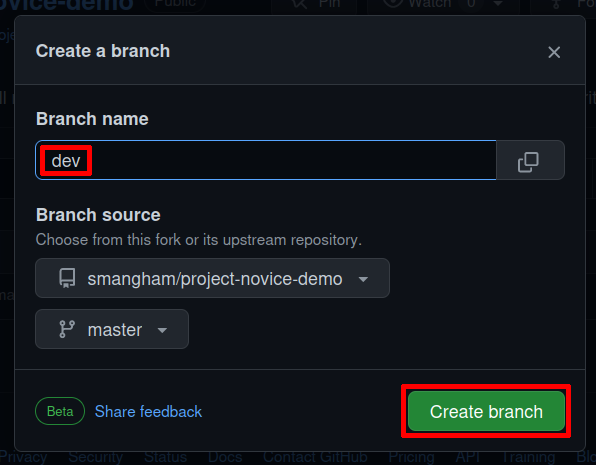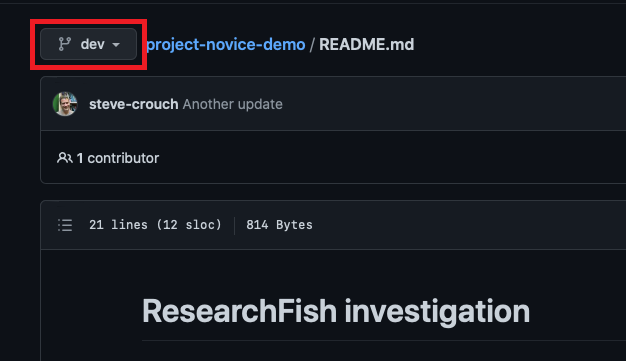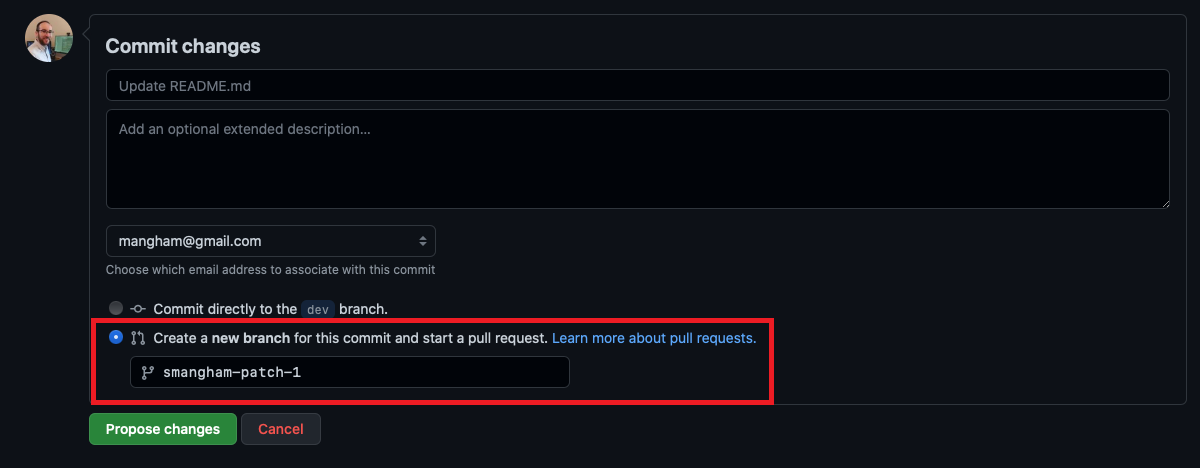Managing a Mini-Project
Overview
Teaching: 0 min
Exercises: 20 minQuestions
How do we put everything we’ve learnt together?
Objectives
Go through the steps of managing a small software project.
Now we’ve seen all the steps involved in developing sustainable code, let’s put that knowledge into practise.
Earlier, we made a fork of the project-novice-demo repository. The code there is pretty bad - it’s written in a very unsustainable way that makes future development harder (and passing the project on to another researcher even harder!). However, as a published project owned by somebody else, we don’t have the permissions required to edit it and fix the problems.
Fortunately, we have already forked it, and now we’re going to set up a small project to improve it. We’ll use the tools we’ve introduced in this lesson so far. Forks don’t have Issues by default, but you can enable them by going to the Settings tab, then scrolling down to Features:

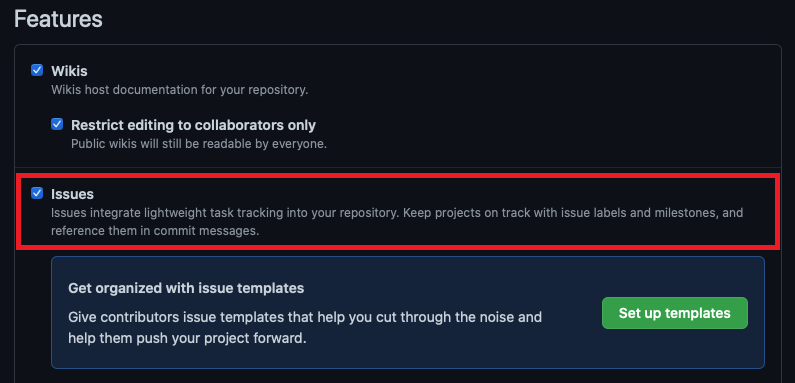
Now we can start looking for problems with the project and recording them as issues. One immediate one is that there’s no develop/dev branch - all the work has been done on the master/main branch:
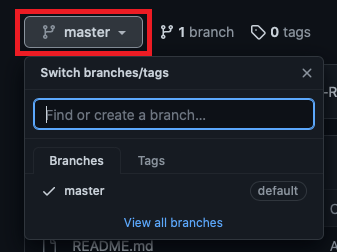
Exercise: Identifying issues
We’ve found one problem, but there’s plenty more here. Take a look at your fork of the
project-novice-demorepository, identify two more things wrong with the code, and raise them, along with the lack of adevbranch, as issues. Don’t try to run the code - there’s more than enough things wrong with it that you can spot just from a quick read-through. Once you’ve got your issues, create a new project board, link it to the repo, and place the issues on it.Solution
There’s too many things wrong to provide an exhaustive list, but here’s a few you may have spotted:
- No stable releases
- Unclear commit messages
LICENSE.mdis emptyREADME.mdhas an inaccurate list of filesREADME.mdcontains broken linksWhat questions do we want to answer with this data?is unfinished- Multiple versions of the same file in the repository
- Poorly-named functions (e.g.
add_column5)- Poorly-named variables (e.g.
df47)- Poorly-documented functions *(e.g.
plot_bar_charts)- Undocumented functions (e.g.
produce_count)We’ll go to the Issues tab of our
project-novice-demo, repository, select New Issue, then create an issue. We can even link our issue directly to our project board from here:
Now we’ll work on addressing the issues we’ve raised. If we want to use the feature-branch workflow, the lack of a dev branch is the first one we need to fix! So we’ll address that first. We go back to our project via the Projects tab, and move the issue to the In progress column of our kanban board to let our collaborators know we’re fixing it:

Now we’ll clone our repository to our machine:
git clone git@github.com:smangham/project-novice-demo.git
Cloning into 'project-novice-demo'...
remote: Enumerating objects: 28, done.
remote: Counting objects: 100% (28/28), done.
remote: Compressing objects: 100% (17/17), done.
remote: Total 28 (delta 13), reused 20 (delta 10), pack-reused 0
Receiving objects: 100% (28/28), 8.32 KiB | 8.32 MiB/s, done.
Resolving deltas: 100% (13/13), done.
Then create a new branch called dev and push it to our remote repository:
git branch dev
git switch dev
Switched to a new branch 'dev'
git push -u origin dev
Total 0 (delta 0), reused 0 (delta 0), pack-reused 0
remote:
remote: Create a pull request for 'dev' on GitHub by visiting:
remote: https://github.com/smangham/project-novice-demo/pull/new/dev
remote:
To github.com:smangham/project-novice-demo.git
* [new branch] dev -> dev
branch 'dev' set up to track 'origin/dev'.
With our work finished, we can close our issue and move it to the ‘Done’ column:

GitHub Web Interface
We suggest fixing this issue by cloning the repository, to run through an example of linking up git and GitHub, but it can also be done via the web interface on GitHub.
If you open the list of branches (where we saw there was no
devbranch), we can click View all branches:On this page, we can click New branch on the right side to create a new branch:
Then in the pop-up we can name the branch
devand create it:
Exercise: Solving Problems
Now we’ve got a
devbranch and a project board with a Todo column with issues in, we can set about fixing one of them.We want to use the feature-branch workflow, so it would be easy to collaborate with other people. Pick one of your open issues, and fix it using the feature-branch workflow, then once it’s done issue a release of your updated
masterbranch!If you don’t have any issues that can be fixed with the feature-branch workflow (e.g. ‘Unclear commit messages’) then add a new issue that the code has a broken link in the
README.mdfile and work on fixing that. Small fixes can even be done directly on GitHub!Note: On GitHub, if you create a Pull Request on the Pull Requests tab of a fork, it goes back to the repository you forked from by default. Double-check when you’re making a Pull Request that it’s going to your fork repository, not
Southampton-RSG-Training!Solution
We can address the broken links like this:
- Move our issue from Todo to In Progress
- Go to our
README.mdfile on GitHub, and switch to thedevbranch version of it- Edit the file on GitHub to put in the correct URL (google it!)
- Submit your changes as a new branch, and create a pull request
- Merge the pull request from our new branch to
dev.- Close our issue on GitHub
- Create a pull request from
devtomaster- When
masteris up to date, issue a release on GitHub.Normally, we wouldn’t just merge a branch into
devthendevstraight intomaster- we’d merge several fixes or new features intodev, then merge tomasterand make a release.
Now you should have a good idea of the skills and techniques required to manage a project successfully!
Key Points
Problems with code and documentation can be tracked as issues.
Issues can be managed on a project board.
Issues can be fixed using the feature-branch workflow.
Stable versions of the code can be published as releases.

